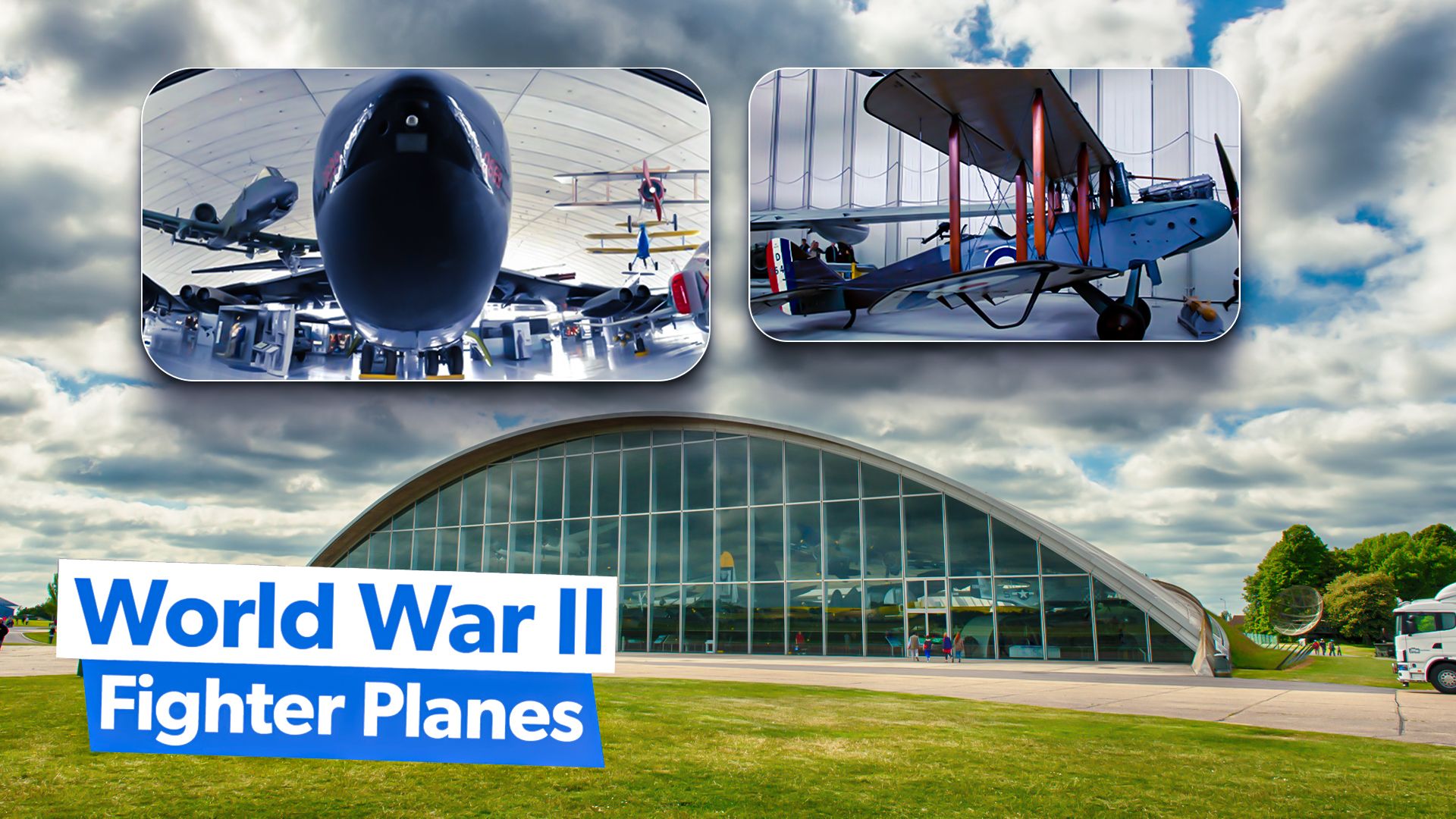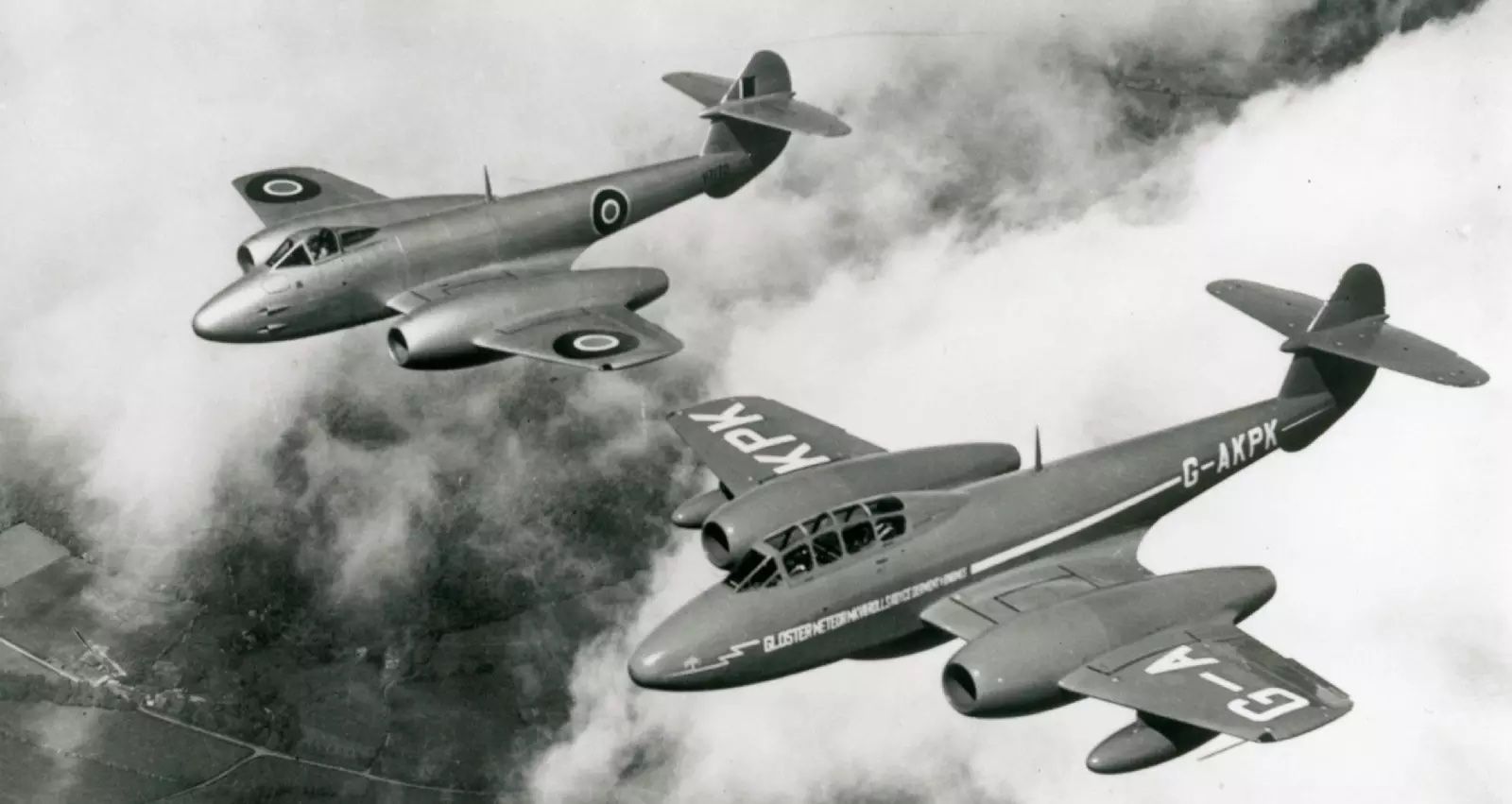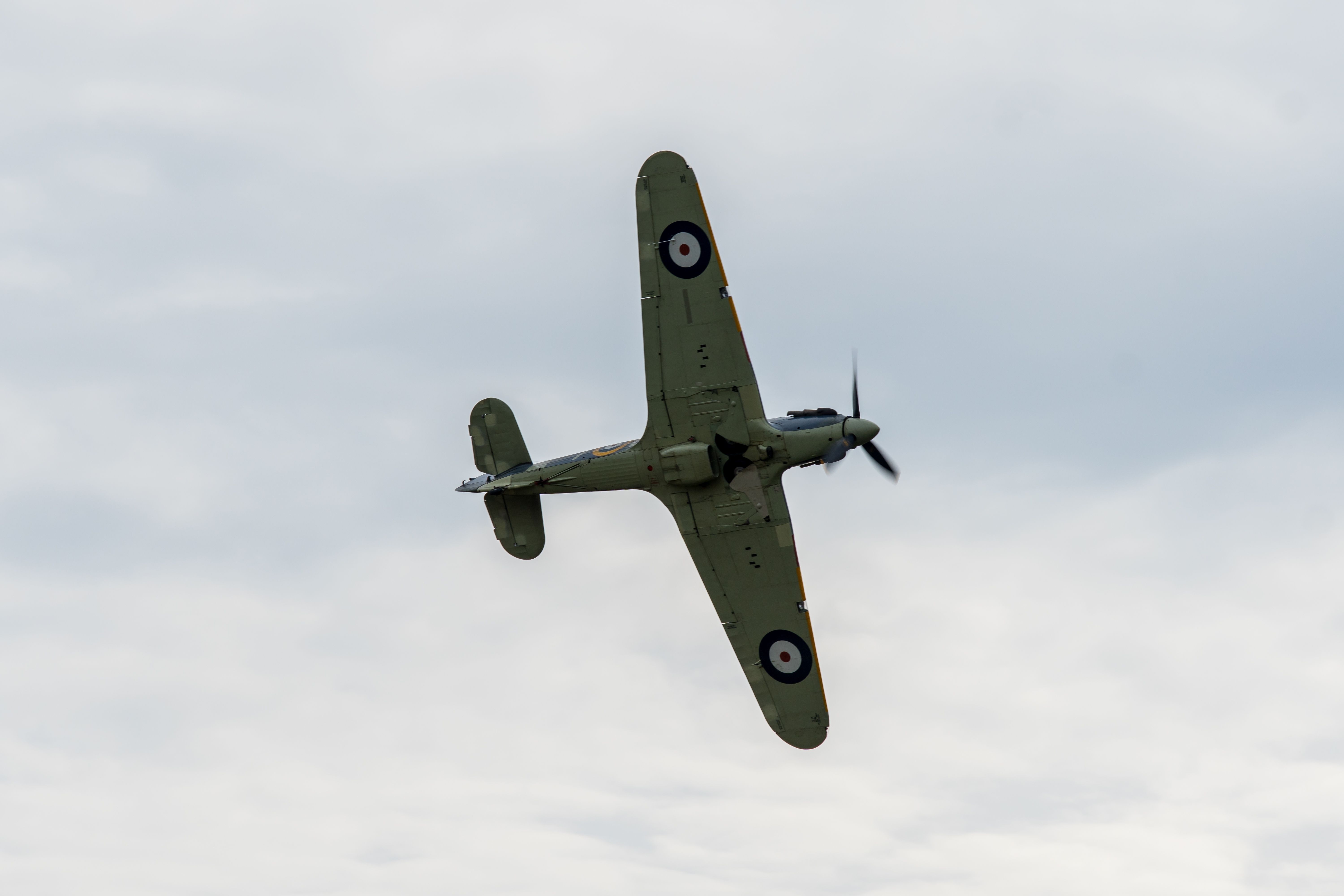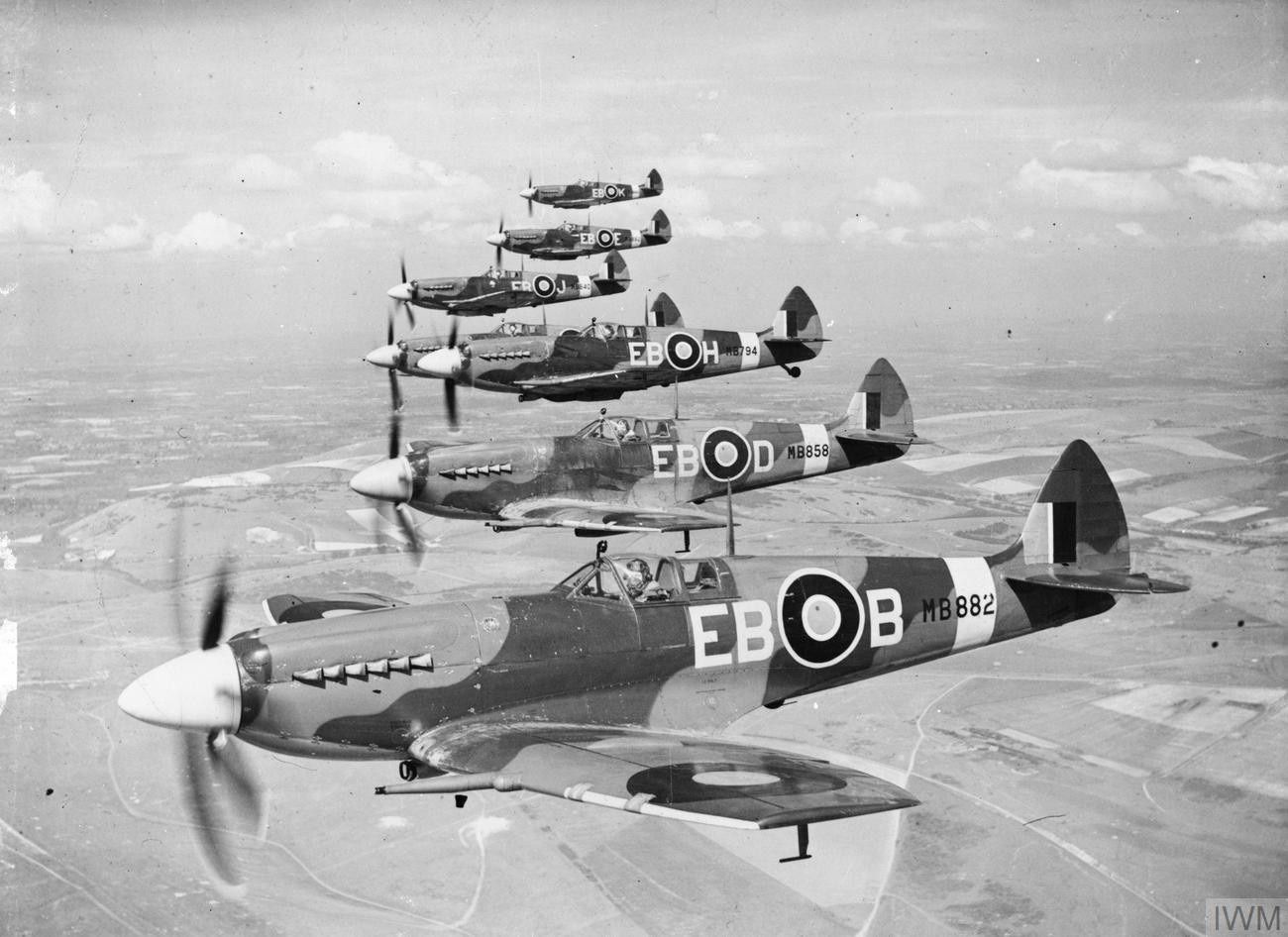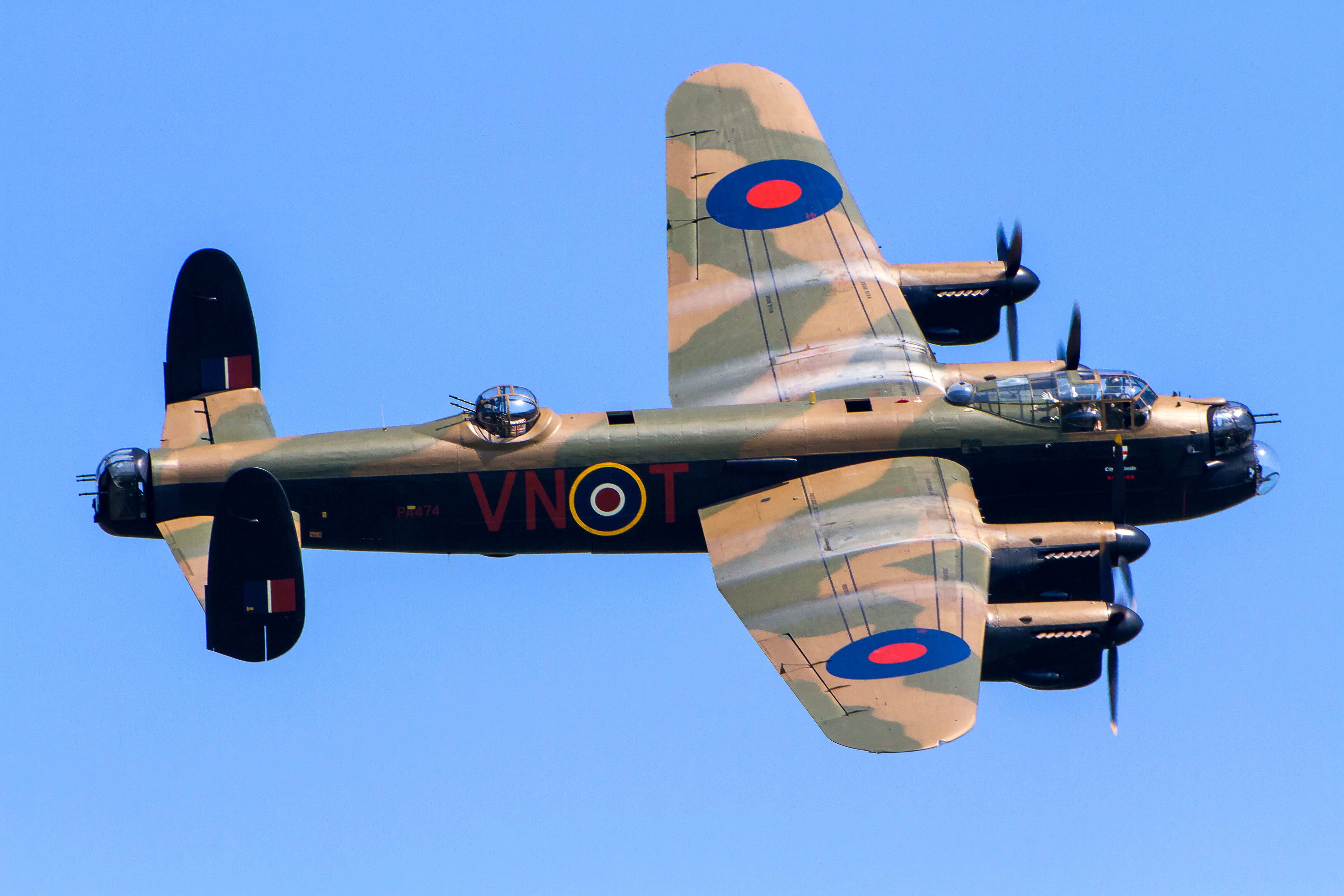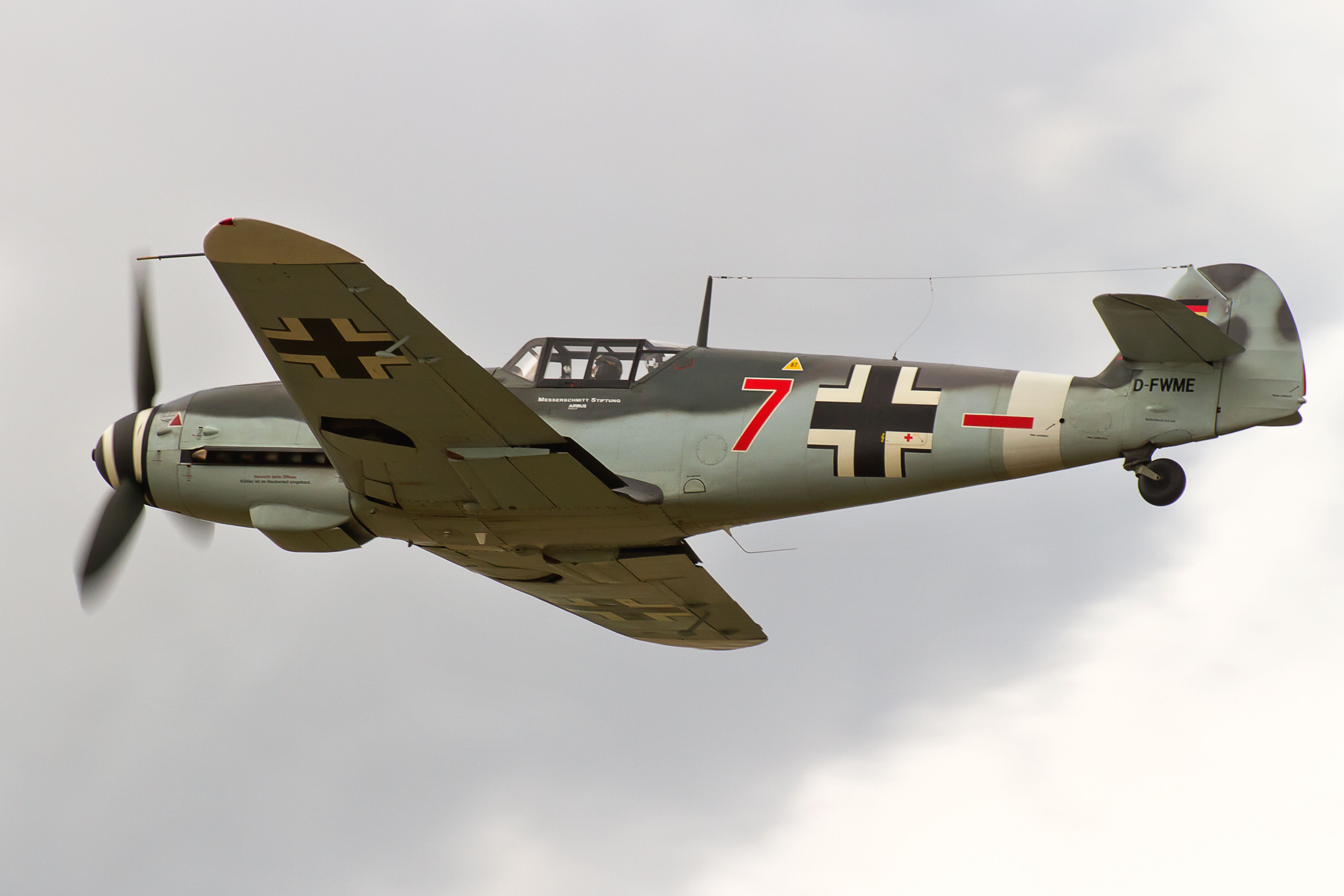Summary
- Gloster Meteor was the only allied Second World War jet fighter, making it revolutionary with its turbojet engines.
- The Hawker Hurricane, a British fighter, was crucial in major events of World War II, showcasing impressive speed and range.
- The Avro Lancaster MK X was the most well-known Allied bomber, and it was known for carrying the destructive Grand Slam bomb.
The Imperial War Museum (IWM) is a British national museum, branded as a group of museums at various locations across the United Kingdom. The IWM in Duxford showcases a large number of airplanes on static and air displays. Simple Flying compiled a list of top World War II aircraft displayed at the IWM Duxford.
1 Gloster Meteor
On display: Gloster Meteor F.8 | WK991
- Maximum speed: 600 mph (970 km/h, 520 knots) at 10,000 ft (3,000 m)
- Maximum speed: Mach 0.82
- Range: 600 mi (970 km, 520 nmi)
- Service ceiling: 43,000 ft (13,000 m)
- Rate of climb: 7,000 ft/min (36 m/s)
The Gloster Meteor was the only allied jet fighter of the Second World War. Despite its aerodynamically inefficient design, its groundbreaking turbojet engines made it a successful combat aircraft. Not only that, the aircraft proved to be a great asset to various forces after the war.
According to IWM,
“The Gloster Meteor was the RAF’s first jet fighter, bringing Britain into the Jet Age. At the same time, engineers of the German Luftwaffe had been working on developing their own operational jet fighter”
“The Meteor found great use as a test aircraft and in the export market after 1945, and saw active service once again in the early 1950s in the Korean War – this time in the hands of the Royal Australian Air Force.”
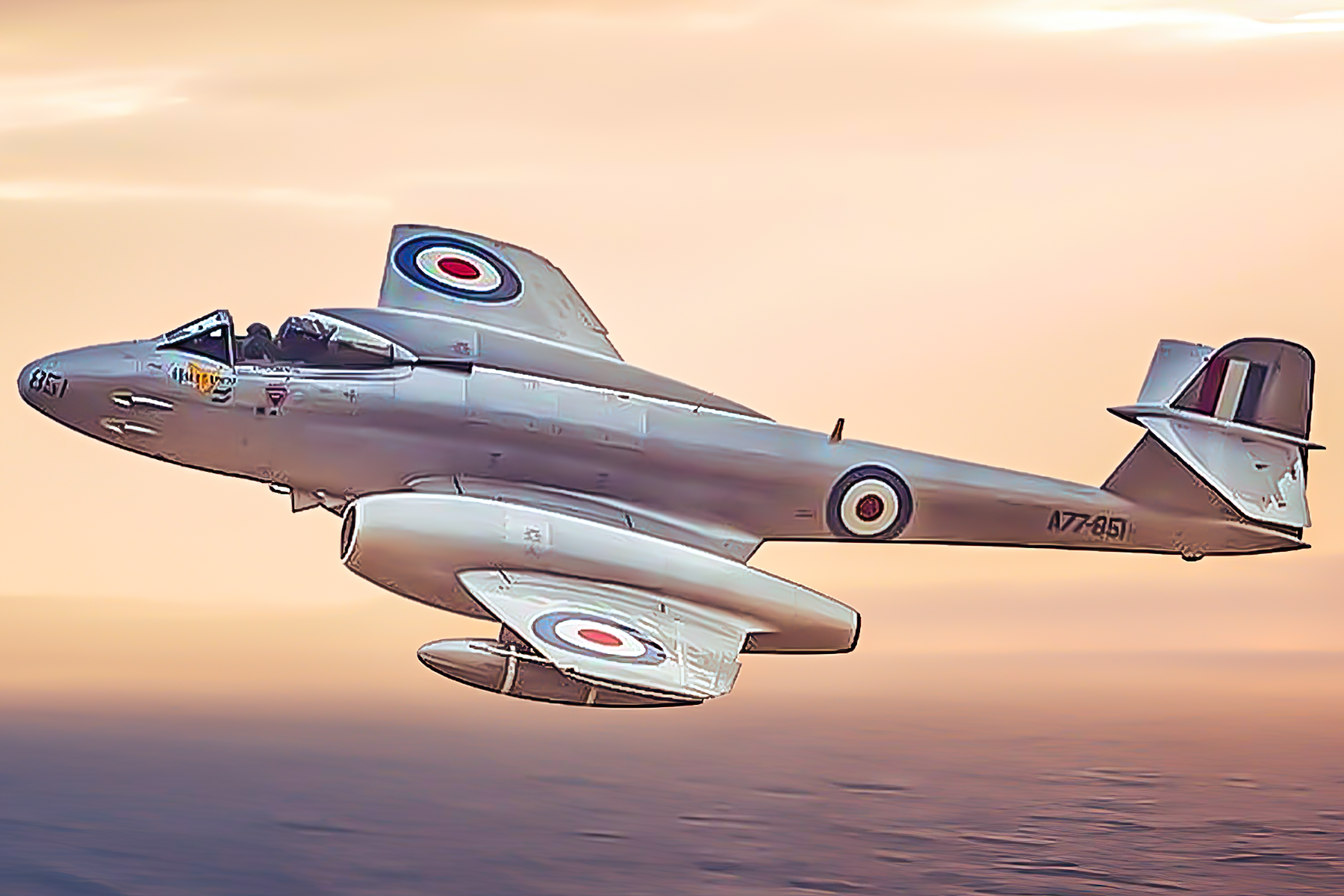
Earliest British Jet Fighter: What Made The Gloster Meteor Unique?
The plane was the only Allied fighter jet fighter to take part in World War II.2 Hawker Hurricane
Several are on display in various collections
- Hawker Hurricane I | V7497
- Hawker Hurricane IIB | Z2315
- Hawker Hurricane I | P2902
- Hawker Hurricane XII | R4118
- Hawker Hurricane TR.2B | BE505
- Hawker Hurricane I | 5547/P3935/P2954
The British single-seat fighter aircraft fought in all major events of the Second World War. Designed in the 1930s by Hawker Aircraft Limited, it performed its first flight in November 1935 and entered service with the Royal Air Force (RAF) of the United Kingdom in December 1937.
The low-wing cantilever monoplane largely benefited from its retractable landing gear and an enclosed cockpit. Powered by one Rolls-Royce Merlin engine, the aircraft could reach a maximum speed of 300 knots (340 mph, 550 km/h). The Hawker Hurricane boasted a 520 NM (600 miles, 970 km) range. Wing Commander Frank Reginald Carey of the RAF claimed 28 air victories onboard Hurricanes during World War II.
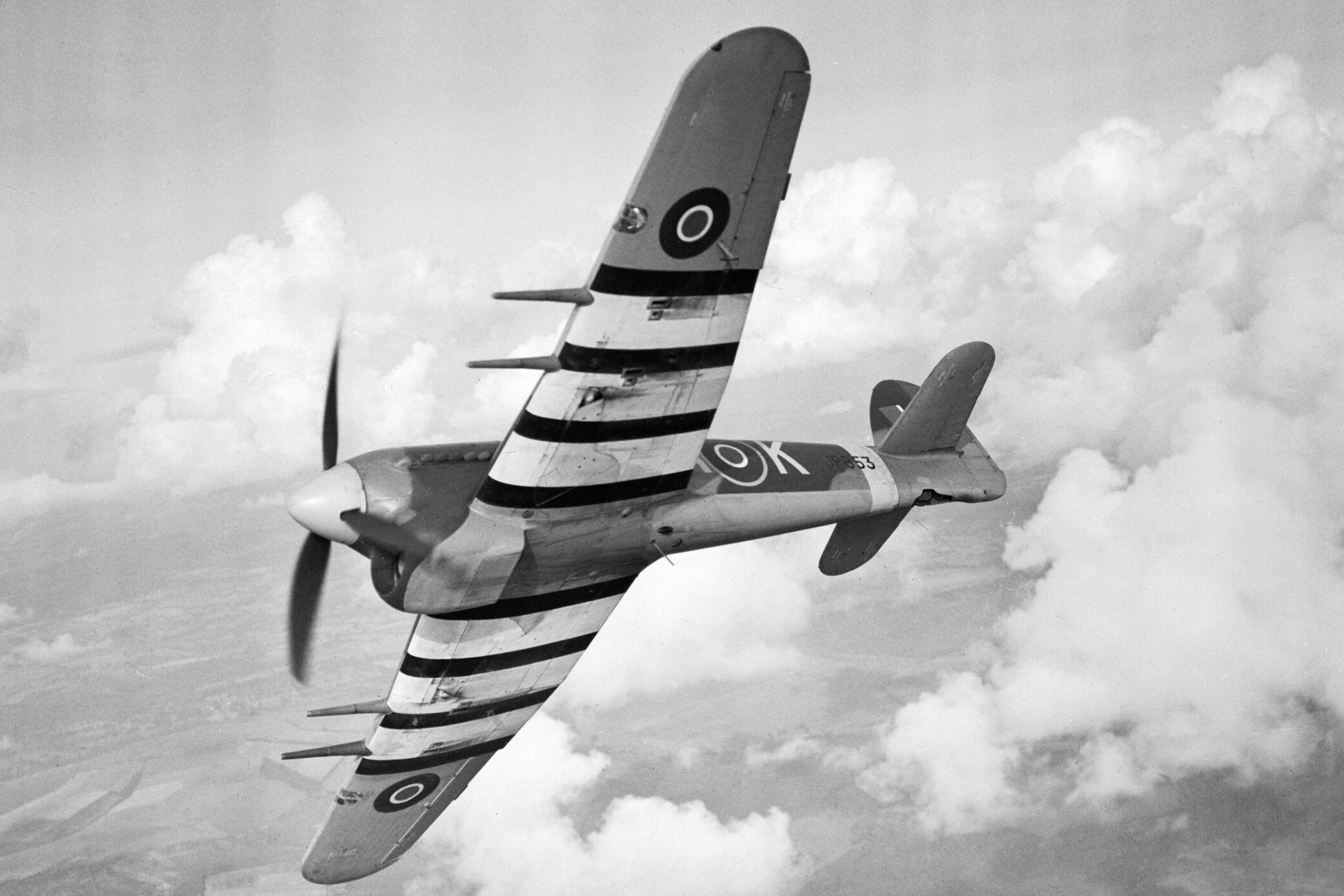
RB396: The Hawker Typhoon Undergoing An Ambitious Rebuild Project
The project is underway on the Isle of Wight.3 Supermarine Spitfire
Static display:
Spitfire IA | N3200 | QV CAA Reg-G-CFGJ Owned by IWM
Air display:
- Spitfire IA | X4650
- Spitfire IA | AR213/P7308
- Spitfire LF.VB | EP120
- Spitfire VC | JG891
The British single-seater aircraft was used by the RAF and several other allied forces during and after World War II. A wide variety of variants, from the MK 1 to MK 24, were built, primarily differentiating by types of wings, configurations, and weaponry. The Spitfire was the only British fighter in continuous production during the Second World War.
Approximately 70 aircraft remain airworthy today and many more on static displays in museums, amusing aviation enthusiasts around the world. As for the IWM, there are four Spitfire (various variants) on air display, three of which are owned by Comanche Warbirds Ltd.
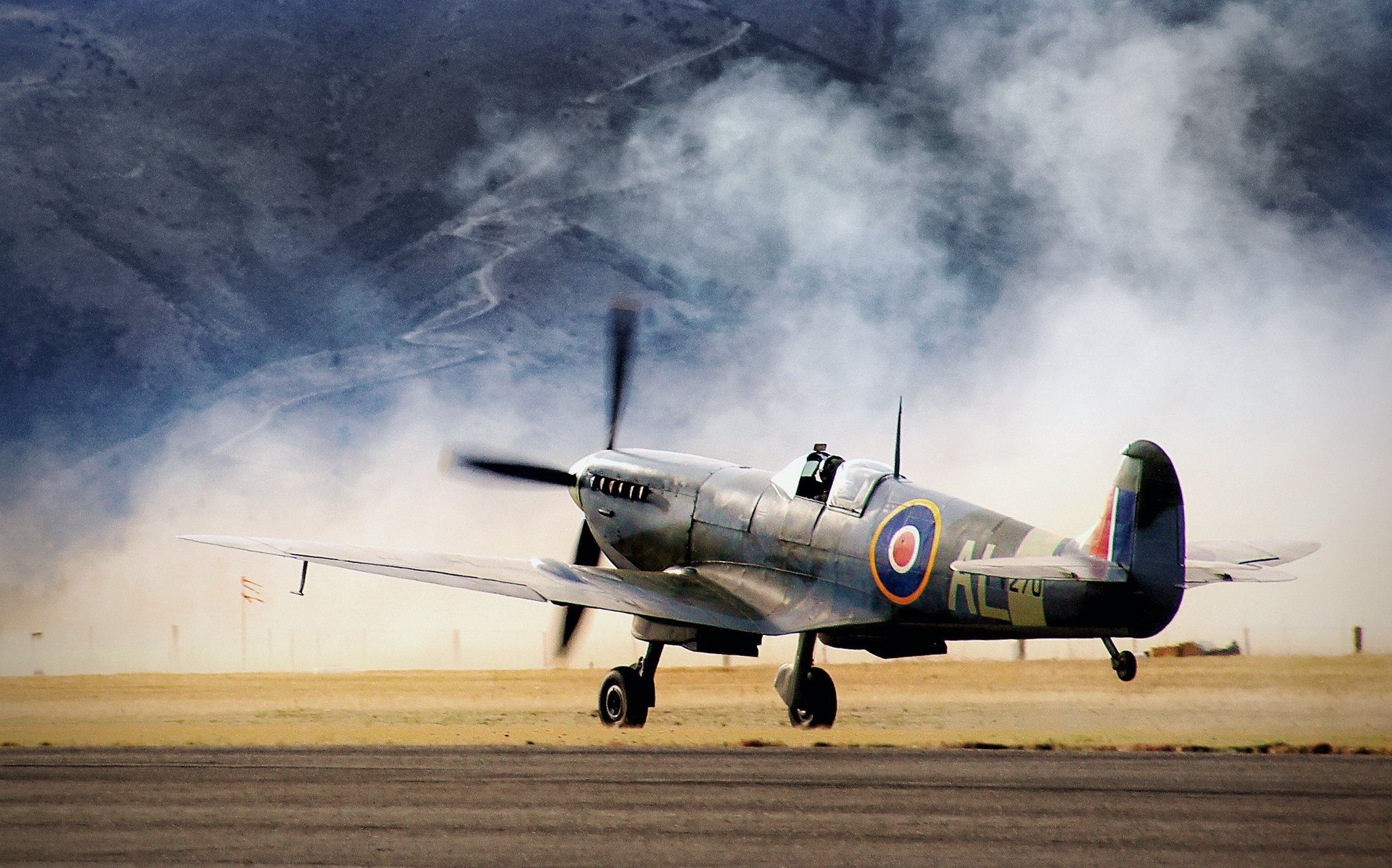
Iconic Fighter Aircraft Of World War II: Spitfires, Mustangs, and Messerschmitts
These aircraft played a pivotal role in shaping the outcome of the war4 Avro Lancaster MK X
On display: KB889 | Royal Canadian Air Force – No. 428 Squadron, coded NA-I
- Length: 69 ft 6 in
- Wingspan: 102 ft
- Power: 1,640 hp each
- Engine: 4 x Packard Merlin 224
- Maximum Speed: 275 mph
- Cruising Speed: 210 mph
- Service Ceiling: 25,700 ft
- Range: 2,530 miles
The Avro Lancaster is the most famous Allied bomber of World War II. The Royal Air Force (RAF) No. 44 Squadron became the first force to be fully equipped with Lancasters. Four Packard Merlin 224 engines power the aircraft, each generating nearly 1,640 horsepower, sufficient for the aircraft to utilize its full potential in combat missions.
The IWM showcases its Lancaster MK X by stating,
“The Avro Lancaster could carry one of the most destructive bombs in the world - the Grand Slam. Weighing 22,000 lbs (10 tonnes), the Grand Slam was the heaviest bomb dropped during the Second World War.”
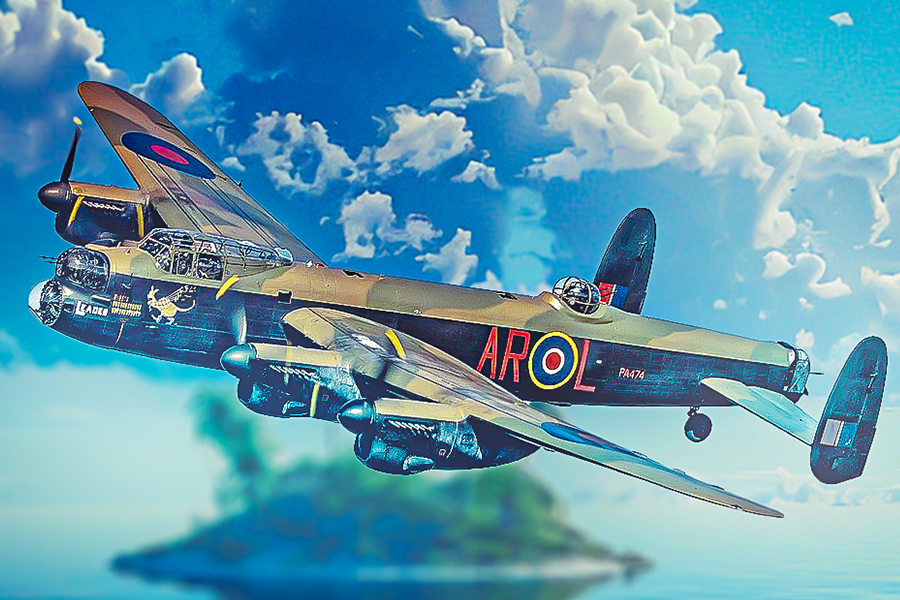
Avro Lancaster Bomber: A Look Back At This WWII RAF Powerhouse
The Avro Lancaster's unique capabilities proved superior to most four-engined allied bombers.5 Messerschmitt Bf 109
On display: Bf 109E-3 | 1190 | Forced landed in 1940
- Maximum speed: 530 km/h (330 mph, 290 knots) at sea level
- Cruise speed: 590 km/h (370 mph, 320 knots) at 6,000 m (20,000 ft)
- Range: 880–1,144 km (547–711 mi, 475–618 nmi)
- Combat range: 440–572 km (273–355 mi, 238–309 nmi)
- Service ceiling: 12,000 m (39,000 ft)
The German World War II fighter aircraft is one of the most popular and the backbone of the Luftwaff’s fighter force. Designed in the early 1930s by Messerschmitt AG, the aircraft performed its first flight in May 1935 and entered force service in February 1937.
The monocoque design was one of the most advanced fighters when it came out. According to IWM,
“Duxford’s Bf 109 is an E-3/E-4 variant. It was attacked by Spitfires in late 1940 and crash-landed in a field in relatively good condition. Because of this smooth crash landing, the aircraft ended up touring North America before going on display at IWM – the tourists’ graffiti from these tours can still be seen on its wings.”
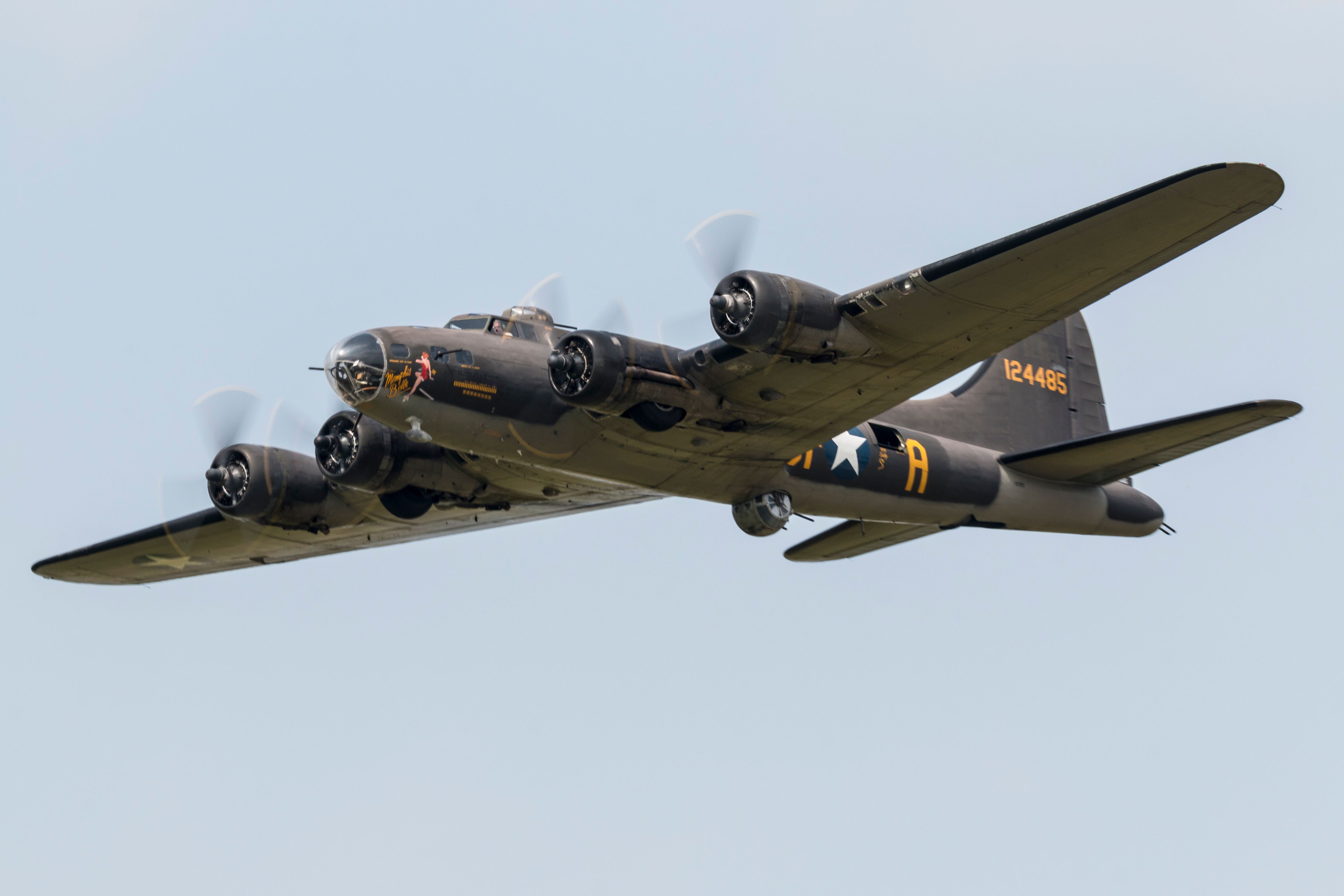
Who Were The 'Bomber Mafia' In World War II?
They believed that precision-guided bombing campaigns could win wars.What are your thoughts on the World War II plane displayed at IWM Duxford? Have you visited the museum recently? Share your experience in the comments section.

